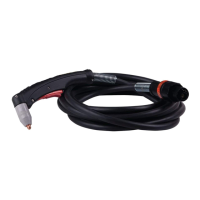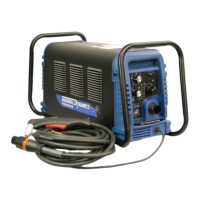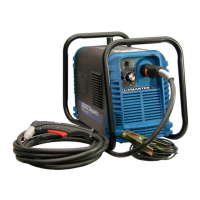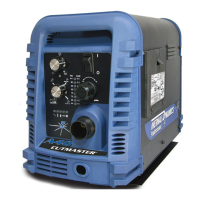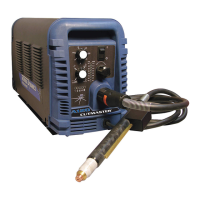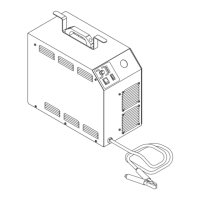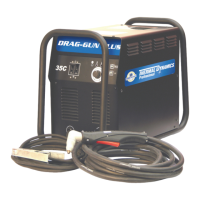INSTALLATION 12 Manual 0-2450
Compressed Air or Nitrogen (N
2
), Only
60 psi (4.2 BAR)
135 scfh (64 lpm)
Maximum input gas pressure must not exceed 125 psi (8.6 BAR).
This cutting system must not be used with Oxygen (O
2
).
Air supply must be free of oil, moisture, and other contaminants.
Excessive oil and moisture may cause double-arcing, rapid tip
wear, or even complete torch failure. Contaminants may cause
poor cutting performance and rapid electrode wear.
To test the quality of air, place a welding filter lens in front of the
torch and turn on the gas. Any oil or moisture in the air will be
visible on the lens. Do not initiate an arc!
An air line filter, capable of filtering to at least 5 microns, is
required when using air from a compressor to insure that mois-
ture and debris from the supply hose does not enter the torch.
The rear panel of the power supply is equipped with a female
1/4 NPT gas input fitting.
To use air or nitrogen from a high pressure gas cylinder:
1. Examine the cylinder valves to be sure they are clean and free
of oil, grease or any foreign material. Momentarily open each
cylinder valve to blow out any dust which may be present.
2. Each cylinder must be equipped with an adjustable high-
pressure regulator capable of pressures up to 75 psi (5.3 BAR)
minimum and flows of up to 200 scfh (94 lpm).
3. Set the tank regulator to 75 psi (5.3 BAR). Use the regulator
on the front of the power supply to adjust the gas pressure to
the unit.
Refer to the manufacturer's specifications for installation and
maintenance procedures for high pressure gas regulators.
Do not use an air line filter with high pressure gas cylinders.
3.03 GAS CONNECTIONS
Gases
Pressure
Flow
CAUTION
WARNING
CAUTION
Checking Air Quality
Filtering
Gas Connections
Using High Pressure
Gas Cylinders
NOTE
Using Shop Air
CAUTION
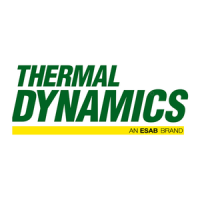
